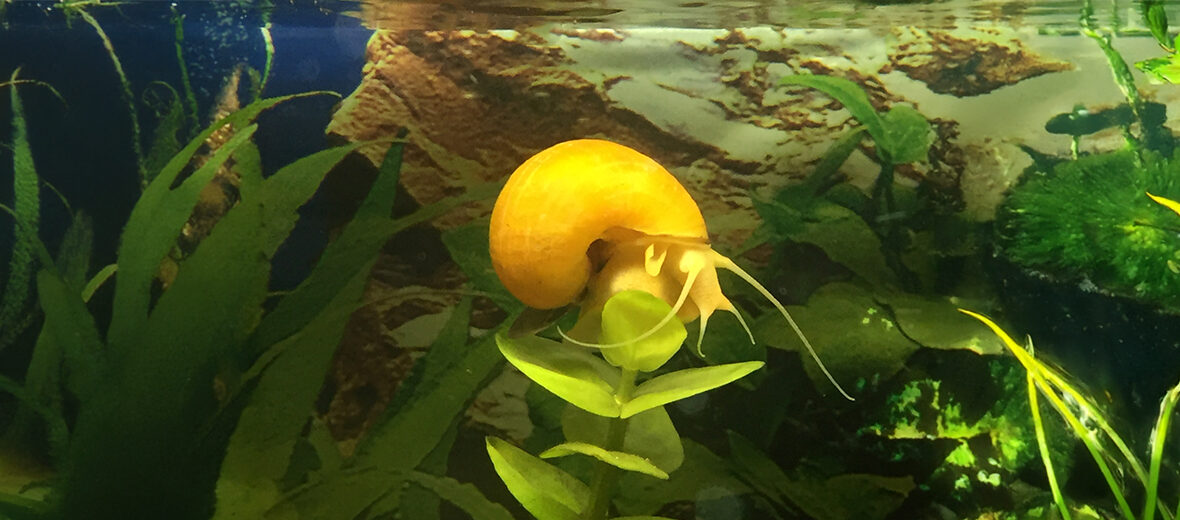
The apple snail is a large aquatic gastropod species that hails from South America, Central America, and southern United States. These gastropods are considered to be an invasive species as they reproduce quickly and consume large amounts of vegetation. In their natural locales, they face the threats of habitat loss and destruction at the hands of residential and commercial developments as well as dams. However, they are abundant and thus listed as Least Concern by the IUCN. Their population trend in listed as unknown.
First the Stats…
Scientific name: Ampullariidae
Weight: Up to 7.05 ounces
Length: Up to 6 inches
Lifespan: Up to 10 years
Now on to the Facts!
1.) These snails have both a lung and a gill that are used for respiration (breathing).
2.) They are considered gonochoristic, which means that each individual organism is either a male or female.
3.) Apple snails have an operculum which lets these snails seal the entrance to their shell to prevent desiccation (drying out) while they are buried in the mud during dry seasons.
4.) Unlike other aquatic snails, these critters are able to leave the water to look for a meal when the aquatic food supply is limited.
5.) Their primary predators are limpkins and snail kites. However, various fish will also dine on these critters, like various freshwater puffer fish.
But wait, there’s more on the apple snail!
6.) They can be found in ponds, rivers, and swamps.
7.) Females typically lay their egg mass just above the waterline, to avoid aquatic predators feasting on them.
Did you know…?
Apple snails include some species that are the largest freshwater snails on earth.
8.) The egg clutch can consist of up to 600 eggs that hatch in up to 4 weeks.
9.) They come in different colors such as brown, albino, yellow, blue, purple, pink, and jade, & with or without banding.
10.) In the 1980s, apple snails were introduced in Taiwan to kick off an escargot industry. It was believed that they could provide valuable proteins for farmers, who primarily live on a rice diet. However, the snails were not popular and eventually either escaped or were released into the wild quickly becoming invasive.
But wait, there’s still more on the apple snail!
11.) In addition to becoming invasive, the imported snails were able to transfer a parasite called Angiostrongylus cantonensis (rat lungworm). This parasite can also infect humans if the snails are eaten and have not been thoroughly cooked first.
12.) Hawaii went through the same introduction of these snails for culinary purposes, and its taro industry is now suffering as a result.
13.) They have also been introduced to Africa and Asia in an attempt to control other medically problematic snails, which serve as intermediate hosts for trematoda parasites. These parasites can cause swimmers itch and schistosomiasis, a disease that affects over 200 million people in tropical regions around the world.
14.) In Veracruz, Mexico, there is a subspecies of apple snail known as “tegogolo” that is prized as a nutritious food item. They have up to 12 grams of protein per 100 grams of apple snail flesh, and are low in fat and high in minerals. These snails are also considered to be an aphrodisiac.
Now a Short Apple Snail Video!
Be sure to share & comment below! Also, check out the Critter Science YouTube channel. Videos added regularly!

Want to suggest a critter for me to write about? Let me know here.
Some source material acquired from: Wikipedia & IUCN
Photo credit: Chapulines



